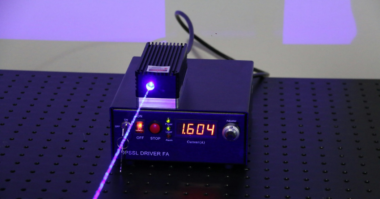As the economic recovery and spending is closely monitored throughout the United States and Maintenance budgets are reduced, many are faced with the uphill challenge of doing more with less. Globally, it appears that the economic recovery will be relatively slow. It is up to us to find out what is cost effective in order to make ends meet. The following methods will guide you in the right direction and help you reduce your maintenance costs.
Training
Implementing a training program will heighten the knowledge of operators, maintenance personnel, and engineers. Increasing that awareness will prompt immediate actions from these key players. Training should be geared toward the basic fundamentals of pumps and systems, troubleshooting, and day to day operation within the plant. A professional training program will increase up-time in addition to reducing any unforeseeable downtime. Many plants need to operate continuously; facilities can not shut down due to problems that could have been prevented. In order to have an effective program, operators, engineers, and mechanics must know how valve alignment in a system affects its performance and reliability. Many maintenance managers will agree that 75 to 80 percent of equipment failure traces back to human error due to a lack of training.
Maintenance Tactics
I have worked with maintenance managers who were from the “old school.” They would use tactics such as deliberately running equipment to failure and purchasing non-OEM parts (cheaper parts). Operating damaged equipment until it completely fails is not good maintenance practice at all. In fact, it creates more problems than it solves. When operating in this mode, you are raising repair costs due to the magnitude of repairs needed after catastrophic failure. To solve this problem, an operator or mechanic should shut down the equipment as soon as possible. This will limit the damage, which in return will minimize the cost of repairs.
When using non-OEM parts you save a penny now and spend a dollar later. These parts may look like OEM parts, however, many have mechanical flaws such as material integrity and vary in efficiency. When replacing damaged parts, there is normally an underlying cause of failure extending beyond the failed item, independent of use of OEM parts. Completely inspect for other damaged parts which may have caused the failure. Reducing repair costs does not come from buying cheaper parts. True savings come from not buying parts prematurely.
Maintenance Programs
Companies view maintenance as a double edged sword. Here are a few highlighted points to help lessen the blow to maintenance budgets. Programs such as Predictive, preventative, and Corrective Maintenance will allow companies with good programs to see savings in the 6 to 7 percent range.
Predictive Maintenance
Predictive maintenance programs have major advantages, such as periodic inspections. These inspections can be done daily, weekly, or monthly. Conducting these inspections allow personnel to notice changes, trends, and potential problems. Predictive maintenance also involves service such as vibration monitoring, oil analysis, and temperature trending. Using programs like these will allow unforeseen problems to be detected and maintenance personnel can plan corrective maintenance. This limits unscheduled downtime and involves less repair work, thus increasing production and revenue.
Preventive Maintenance
Maintenance plays an important role in any effort to reduce maintenance costs. Preventive maintenance programs are pre-assigned actions which are scheduled to occur. Studies by international companies and engineering institutes have shown that industrial facilities and municipalities can save up to 10 percent on maintenance by focusing on their preventive maintenance efforts. A good PM program focuses mainly on energy savings. When conduction inspections, lost revenue is consistently traced to the following: leaks, lubrication, misalignment, and belt slippage. Leaks are easy to find. Normally, you will find pools of liquid on the floor or dripping from the overhead. Energy is wasted since the system has to run more frequently to make up for what is lost. When bearings have excessive lubrication, energy is lost through fluid friction in the lubricant causing the bearings to overheat or run at higher than normal temperatures. The opposite occurs when there is insufficient lubrication. This results in metal to metal contact causing friction in the bearings and leading to premature failure. Misalignment of coupling can also lead to energy loss. Heat is generated in the flex portion of the coupling and the bearing supporting the shaft. Proper alignment is important to prevent such energy loss through coupling. Belt slippage is another mechanical loss which can be prevented. Simply by adjusting the belts to insure proper tension as shown in technical manuals can this be achieved.
Corrective Maintenance
As a problem emerges, corrective maintenance is performed to restore systems back to operability. When conducting corrective maintenance, there are 3 major steps that should be performed. First, the visual and physical inspection. Second, diagnosis of the failed part. Finally, interview the system operators. Following these steps will aid in determining what caused the failure and how to proceed to towards appropriate action. It is very likely that a number of parts may have failed simultaneously. Catastrophic failure can and will raise repair costs. New units will raise the cost even higher. In some events, failure can be impossible to predict or prevent. After determining the cause of the failure and repairs have begun, inventory all damaged parts by using a parts ordering form with information from the failed unit. Compare your findings with the correct technical manual. Taking time to research parts will save time and money. Play an active role when ordering parts, this will help when it’s time to start repairs as it will prevent the wrong parts being ordered. Corrective and preventive maintenance can be expensive. However, in order to keep costs low, ensuring that pumps and systems operate at peak efficiency can only be achieved through maintenance.
Conclusion
We use millions of pumps in our day-to day operation; this number continues to grow even larger worldwide. Correct operation of pumps and systems is vital, to insure pumps perform as designed and to prevent mishaps. There are a variety of ways to see this is being done. Training events, continuing education, part research and evaluation, and maintenance programs are some of those ways. Most imperative, however, is communication between managers and mechanics in planning of maintenance programs. Playing an active role in training, maintenance, and following up with suppliers is a small, but important, role when reducing maintenance costs. There are thousands of ways to cut costs, starting with your personnel. If you keep them informed and well trained, you will have made the first step in the battle against cost.
For more information, please email Preston Walker, Jr. at prestonwalker81@yahoo.com




Comments